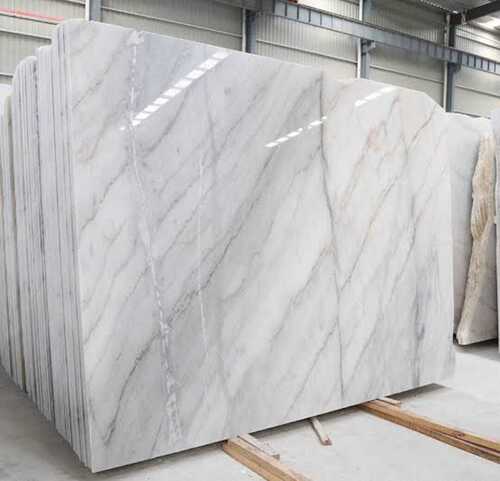Marble, granular limestone or dolomite (i.e., rock composed of calcium-magnesium carbonate) that has been recrystallized under the influence of heat, pressure, and aqueous solutions. Commercially, it includes all decorative calcium-rich rocks that can be polished, as well as certain serpentines (verd antiques).
Petrographically marbles are massive rather than thin-layered and consist of a mosaic of calcite grains that rarely show any traces of crystalline form under the microscope. They are traversed by minute cracks that accord with the rhombohedral cleavage (planes of fracture that intersect to yield rhombic forms) of calcite. In the more severely deformed rocks, the grains show stripes and may be elongated in a particular direction or even crushed.
Marbles often occur interbedded with such metamorphic rocks as mica schists, phyllites, gneisses, and granulites and are most common in the older layers of Earth’s crust that have been deeply buried in regions of extreme folding and igneous intrusion. The change from limestones rich in fossils into true marbles in such metamorphic regions is a common phenomenon; occasionally, as at Carrara, Italy, and at Bergen, Norway, recrystallization of the rock has not completely obliterated the organic structures.
Most of the white and gray marbles of Alabama, Georgia, and western New England, and that from Yule, Colorado, are recrystallized rocks, as are a number of Greek and Italian statuary marbles famous from antiquity, which are still quarried. These include the Parian marble, the Pentelic marble of Attica in which Phidias, Praxiteles, and other Greek sculptors executed their principal works, and the snow-white Carrara marble used by Michelangelo and Antonio Canova and favoured by modern sculptors. The exterior of the National Gallery of Art in Washington, D.C., is of Tennessee marble, and the Lincoln Memorial contains marbles from Yule, Colorado, Alabama (roof transparencies), and Georgia (Lincoln statue).
Uses:-
Marbles are used principally for buildings and monuments, interior decoration, statuary, table tops, and novelties. Colour and appearance are their most important qualities. Resistance to abrasion, which is a function of cohesion between grains as well as the hardness of the component minerals, is important for floor and stair treads. The ability to transmit light is important for statuary marble, which achieves its lustre from light penetrating from about 12.7 to 38 mm (0.5 to 1.5 inches) from where it is reflected at the surfaces of deeper lying crystals. Brecciated, coloured marbles, onyx marble, and verd antique are used principally for interior decoration and for novelties. Statuary marble, the most valuable variety, must be pure white and of uniform grain size. For endurance in exterior use, marble should be uniform and nonporous to prevent the entrance of water that might discolour the stone or cause disintegration by freezing. It also should be free from impurities such as pyrite that might lead to staining or weathering. Calcite marbles that are exposed to atmospheric moisture made acid by its contained carbon dioxide, sulfur dioxide, and other gases maintain a relatively smooth surface during weathering; but dolomite limestone may weather with an irregular, sandy surface from which the dolomite crystals stand out.
The main mineral in marbles is calcite, and this mineral’s variation in hardness, light transmission, and other properties in divers directions has many practical consequences in preparing some marbles. Calcite crystals are doubly refractive—they transmit light in two directions and more light in one direction; slabs prepared for uses in which translucency is significant are therefore cut parallel to that direction. Bending of marble slabs has been attributed to the directional thermal expansion of calcite crystals on heating.
Quarrying:-
The use of explosives in the quarrying of marble is limited because of the danger of shattering the rock. Instead, channeling machines that utilize chisel-edged steel bars make cuts about 5 cm (2 inches) wide and a few metres deep. Wherever possible, advantage is taken of natural joints already present in the rock, and cuts are made in the direction of easiest splitting, which is a consequence of the parallel elongation of platy or fibrous minerals. The marble blocks outlined by joints and cuts are separated by driving wedges into drill holes. Mill sawing into slabs is done with sets of parallel iron blades that move back and forth and are fed by sand and water. The marble may be machined with lathes and carborundum wheels and is then polished with increasingly finer grades of abrasive. Even with the most careful quarrying and manufacturing methods, at least half of the total output of marble is waste. Some of this material is made into chips for terrazzo flooring and stucco wall finish. In various localities it is put to most of the major uses for which high-calcium limestone is suitable.

